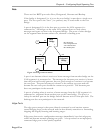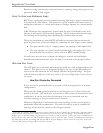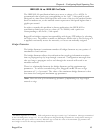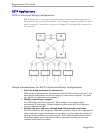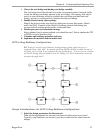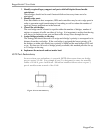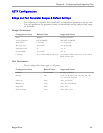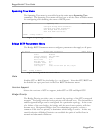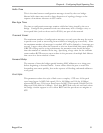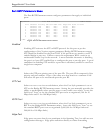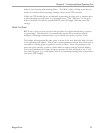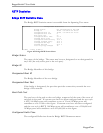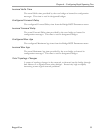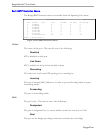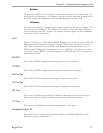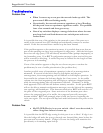
Chapter 6 – Configuring Rapid Spanning Tree
Hello Time
This is the time between configuration messages issued by the root bridge.
Shorter hello times may result in faster detection of topology changes at the
expense of moderate increases in STP traffic.
Max Age Time
The time a configuration message remains valid after being issued by the root
bridge. Configure this parameter with care when many tiers of bridges exist, or
slow speed links (such as those used in WANs) are part of the network
Transmit Count
The maximum number of configuration messages on each port that may be sent in
a special event (such as recovering from a failure or bringing up a new link). After
the maximum number of messages is reached, STP will be limited to 1 message per
second. Larger values allow the network to recover from failed links more quickly.
If RSTP is being used in a ring architecture the transmit count should be larger
than the number of switches in the ring. Specifying a large value for the transmit
count renders RSTP recovery more robust in the presence of multiple link failures
that occur in a short window of time.
Forward Delay
The amount of time the bridge spends learning MAC addresses on a rising port
before beginning to forward traffic. Lower values allow the port to reach the
forwarding state more quickly, but at the expense of flooding unlearned addresses
to all ports.
Cost Style
This parameter selects the style of link costs to employ. STP uses 16-bit path
costs based upon 1x10E9/link speed (19 for 100 Mbps and 100 for 10 Mbps)
whereas RSTP uses 32 bit costs based upon 2x10E13/link speed (200,000 for 100
Mbps and 2,000,000 for 10 Mbps). Note that RSTP link costs are used only when
the bridge version support is set to allow RSTP and the port does not migrate to
STP.
RuggedCom
51



